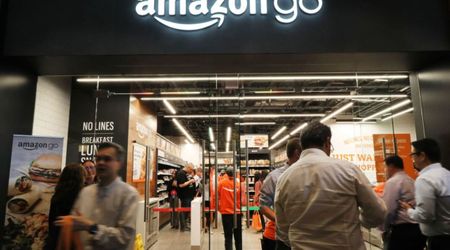Now, Robots Are Waiting Tables. But Are They The Future?

The food industry is no stranger to innovation, and one of the latest trends gaining momentum is robots as waiters. Yes, you heard it right. These waist-high machines —equipped with the ability to greet guests, lead them to their tables, deliver food and even handle dirty dishes — are making their way into dining rooms around the world.
The sales of robot waiters have been on the rise and many in the industry see them as a potential solution to labor shortages, according to AP News. However, opinion is divided on whether these robots are a game-changer or just a gimmick.
The Potential Benefits of Robot Waiters
Proponents of robot waiters argue that they can ease the workload for human staff, and make service more efficient. Dennis Reynolds, the dean of the Hilton College of Global Hospitality Leadership at the University of Houston, believes that this is the direction in which the world is heading. Their implementation at the university's restaurant has demonstrated positive results, supporting the idea that robot waiters can complement human servers effectively.

Moreover, these robots can help address the industry's labor shortages. With the number of available workers falling short of customer demand, the adoption of robot waiters presents an opportunity to bridge the gap. Li Zhai, owner of Noodle Topia in Michigan, found success with robot waiters when he was struggling to find enough staff. The robots not only saved him money but also attracted customers through the novelty factor and their presence on social media.
Challenges and Limitations of Robot Waiters
Skeptics argue that restaurants are complex and dynamic environments that pose significant challenges for automation. Craig Le Clair, a vice president at Forrester who specializes in automation, said that restaurants are often chaotic and have various physical obstacles that robots struggle to navigate. Additionally, current robot waiters cannot take orders, limiting their role to specific tasks.

Despite these limitations, companies like Bear Robotics and Pudu Robotics are rapidly deploying their robot waiters. Bear Robotics plans to have 10,000 of its Servi robots deployed across 44 US states and overseas by the end of the year. Pudu Robotics, with over 56,000 robots deployed worldwide, indicates a growing interest in automation across restaurant chains.
Public Perception and Industry Trends
The acceptance of robot servers is already high in Asia, with Pizza Hut implementing them in 1,000 restaurants in China. In the United States, the adoption has been slower but is gaining traction. Chick-fil-A, for example, is testing robot servers at multiple locations and reports positive outcomes, such as improved efficiency and more time for human employees to focus on customer service.

Nonetheless, not all chains have achieved success with robot waiters. Chili's attempted to introduce a robot server named Rita but discontinued the program due to issues with speed and interference with human servers. Haidilao, a hot pot chain in China, also encountered problems with their robots, finding them less reliable and cost-effective than human servers.
The Future Outlook
Looking ahead, experts predict a future where a percentage of restaurants will continue to have human servers for a more personalized experience, while others rely more heavily on robots in both the kitchen and dining areas. Economics favor the use of robots, as the cost of human labor continues to rise while technology costs decrease.
However, not everyone embraces this future. Saru Jayaraman, president of One Fair Wage, argues that labor shortages could be resolved by paying workers higher wages. According to Jayaraman, the essence of a full-service restaurant experience lies in the interaction between humans, and replacing that with technology may diminish the overall experience.




















